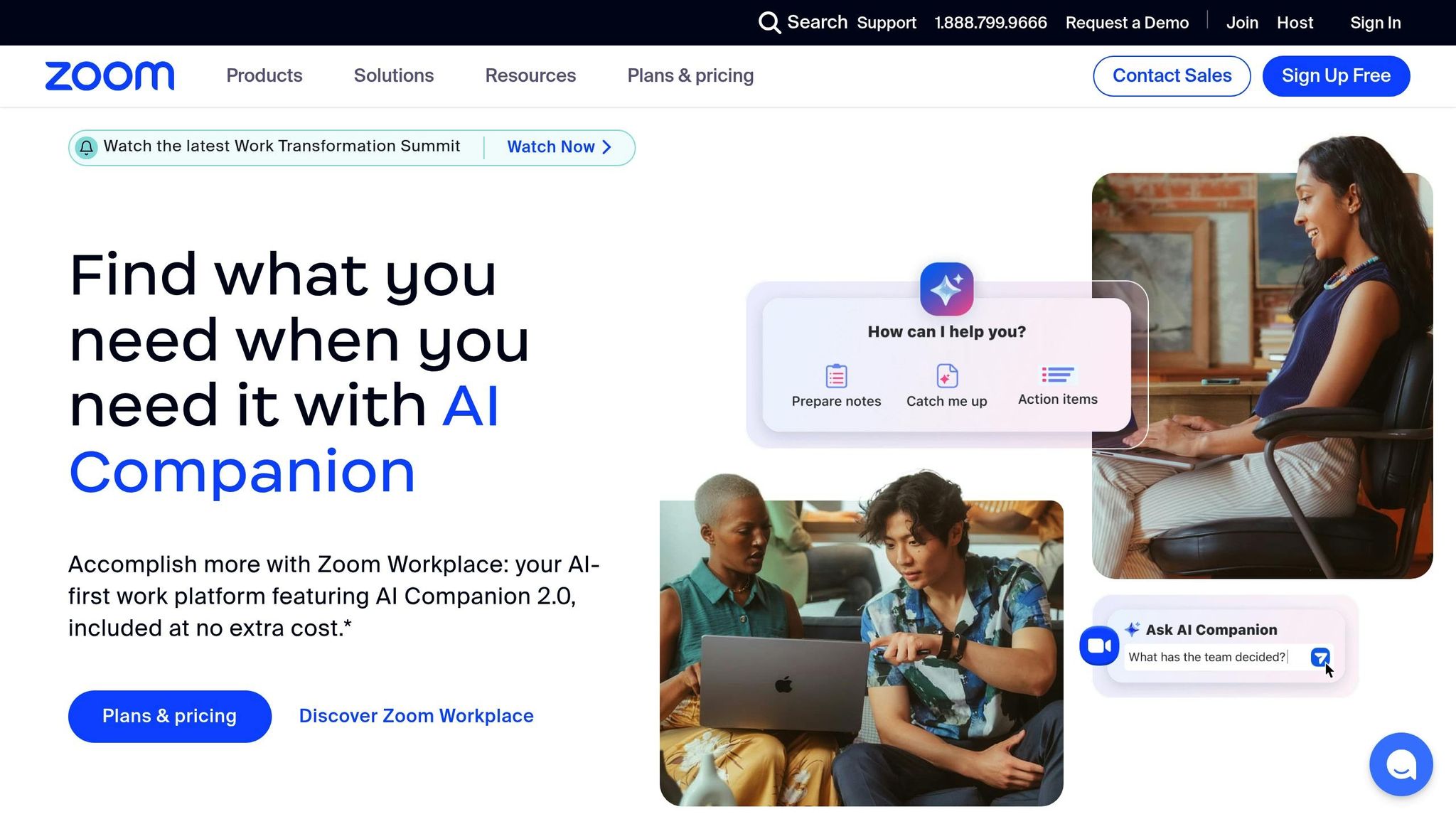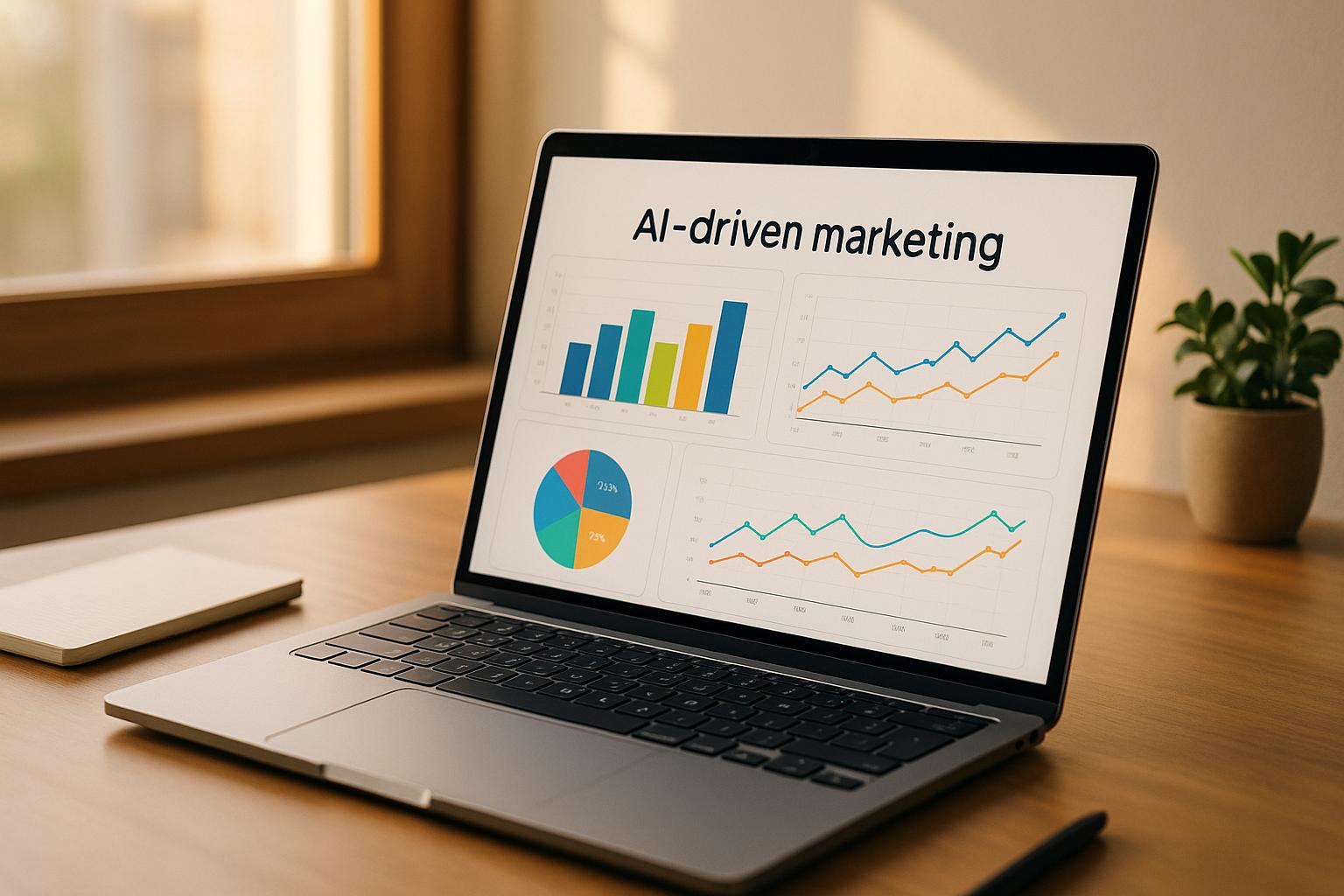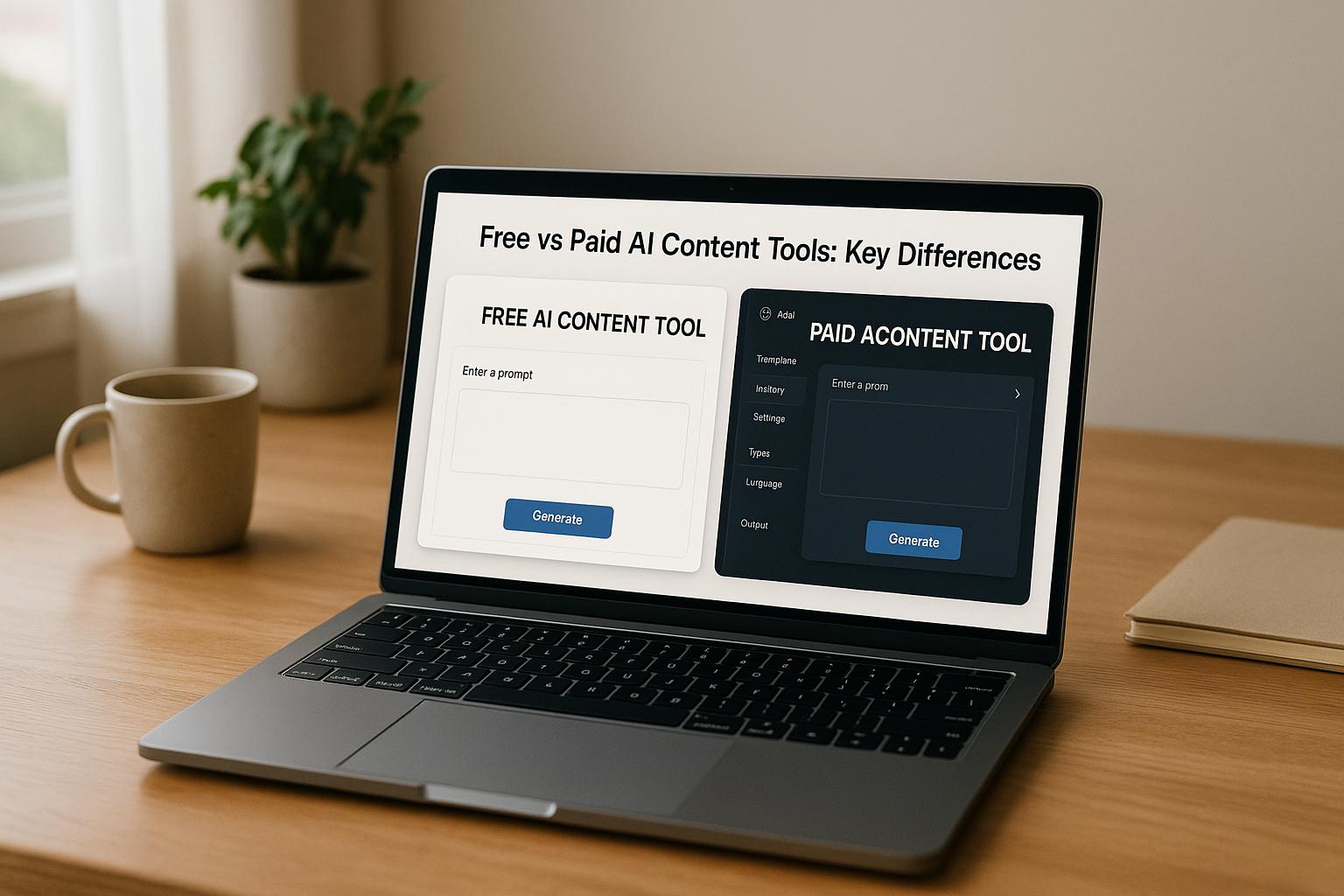- Subscription-Based: Fixed recurring payments (e.g., Salesforce). Great for predictable revenue and steady customer retention.
- Usage-Based: Pay-as-you-go (e.g., AWS, Twilio). Ideal for services with variable usage.
- Tiered: Multiple packages with features at different price points (e.g., HubSpot). Works well for diverse customer needs.
- Freemium: Free basic version with paid upgrades (e.g., Dropbox, Slack). Best for mass-market products with network effects.
Quick Comparison
| Model | Best For | Key Advantage | Example |
|---|---|---|---|
| Subscription-Based | Consistent-value services | Predictable revenue | Salesforce |
| Usage-Based | Variable usage services | Aligns cost with value | AWS |
| Tiered | Broad customer segments | Customizable scaling | HubSpot |
| Freemium | Network-effect products | Easy customer acquisition | Dropbox |
Your choice depends on your product, audience, and goals. The article explores how to align these models with your business strategy.
SaaS Pricing Models Explained
4 Main SaaS Pricing Models
Let’s break down the main SaaS pricing models, their strengths, and when they work best.
Subscription-Based Pricing
This is a classic approach where customers pay a fixed amount on a recurring basis, such as monthly or annually. Salesforce is a great example, offering subscription plans for its CRM platform[1]. This model is ideal for services that deliver consistent value, like CRM tools or project management software. It helps businesses predict revenue more accurately and often improves customer retention rates[6].
Usage-Based Pricing
Here, customers are charged based on how much they use the service. This model has grown in popularity, with adoption increasing from 30% in 2019 to 38% in 2022[7]. AWS and Twilio are key examples - AWS charges for resources consumed, while Twilio bills per message sent[3][4]. It’s a good fit for services where usage varies significantly between customers.
Tiered Pricing
Currently the most widely used model, with 37% of SaaS companies adopting it[2]. Companies like HubSpot have seen success with tiered pricing. In 2021, HubSpot revamped its pricing structure, leading to a 35% jump in average contract value and a 15% boost in customer retention over the next year[2]. Most businesses offer 3–5 tiers to keep things simple while providing upgrade opportunities.
Freemium Pricing
This model works well for products that benefit from network effects. Companies like Dropbox and Slack have nailed it by offering strong free plans while encouraging upgrades through added features[2]. On average, freemium models convert 2–5% of free users into paying customers[3].
Here’s a quick comparison of these models:
| Model | Best For | Key Advantage | Notable Example | Success Metric |
|---|---|---|---|---|
| Subscription-Based | Consistent-value services | Predictable revenue | Salesforce | Better revenue forecasting |
| Usage-Based | Variable usage services | Aligns cost with value | AWS | 50% lower revenue churn[7] |
| Tiered | Broad customer segments | Customizable scaling | HubSpot | 35% higher contract value[2] |
| Freemium | Network-effect products | Easy customer acquisition | Dropbox | 2–5% conversion rate[3] |
Some companies combine these models for even better results. For example, Zapier blends freemium and tiered pricing by offering a free plan alongside paid tiers that scale with usage and features[4].
The real challenge isn’t just picking the right model - it’s ensuring it aligns with your product’s value and your audience’s needs. Keep an eye on metrics like Customer Lifetime Value (CLV) and Average Revenue Per User (ARPU) to fine-tune your approach and maximize revenue.
1. Subscription-Based Pricing
Subscription-based pricing is a model where customers pay recurring fees - monthly or annually - for access to software. It's a popular choice, with 70% of SaaS companies using this approach[1].
Why It Works: Predictable Revenue and Growth
This pricing model creates steady revenue streams. Companies using it grow their revenue 5.5 times faster than the S&P 500 average[7]. A great example is Adobe's shift to Creative Cloud. By 2017, subscription revenue hit $4.4 billion, making up 84% of their total revenue[2].
Common Pricing Structures
Many SaaS companies offer tiered plans to cater to different customer needs:
| Billing Cycle | Typical Discount | Best For |
|---|---|---|
| Monthly | None (base price) | Small businesses, startups |
| Annual | 15-20% | Mid-sized companies |
| Multi-year | 25-30%+ | Enterprise clients |
Delivering Value to Customers
To keep customers engaged and satisfied, SaaS providers focus on:
- Regular Feature Updates: Companies like Asana release features frequently based on user feedback to justify subscription costs[3].
- Customer Onboarding: A smooth onboarding process ensures users see immediate benefits, improving retention rates[5].
- Scalability: Platforms like Slack offer discounts (e.g., 17% on annual plans) and allow plan adjustments as business needs change[5].
Tips for Effective Implementation
To make the most of a subscription-based model, consider these strategies:
- Track key metrics like Customer Lifetime Value (CLV) and churn rates.
- Offer clear upgrade options for customers as they grow.
- Maintain excellent customer support to build trust.
- Regularly communicate the return on investment (ROI) customers gain.
- Explore hybrid models that mix subscriptions with usage-based pricing[2].
This model thrives by balancing steady revenue with ongoing customer satisfaction, making it a cornerstone of SaaS pricing strategies.
2. Usage-Based Pricing
Usage-based pricing is a model where customers pay only for what they use. Its adoption jumped from 34% in 2020 to 45% in 2021[5].
Performance and Growth Impact
Companies using this pricing strategy often see better results:
- 29.9% median growth rate, compared to 21.7% for other models[5].
- 27.7% higher company valuations[5].
- 56% of companies achieve net revenue retention rates above 120%[5].
Real-World Success Stories
A great example is Snowflake. Their "Data Cloud" platform charges based on data storage and compute usage. This approach helped them grow revenue from $97 million in 2019 to $592 million in 2021 while maintaining a 168% net revenue retention rate.
Implementation Considerations
To make usage-based pricing work, companies need strong technical systems in place:
| Component | Purpose | Core Feature |
|---|---|---|
| Usage Tracking | Monitors consumption | Real-time metrics |
| Billing System | Handles variable charges | Flexible payment processing |
| Customer Dashboard | Provides transparency | Usage alerts and forecasting |
| Analytics Tools | Identifies patterns | Predictive insights |
Best Fit Scenarios
This pricing model is especially effective for:
- Cloud computing and storage services
- Communication APIs
- Data processing platforms
- Transaction-based services
- IoT platforms
For instance, AWS's pay-as-you-go model generated $21.4 billion in Q4 2022 revenue, with 20% year-over-year growth[1].
Customer Benefits
Usage-based pricing offers clear perks for customers:
- Lower upfront costs, ideal for small businesses
- Costs align directly with the value received
- Easy scalability - up or down
- No long-term commitments
- Transparent and predictable pricing
Addressing Potential Challenges
While the model has its advantages, it also comes with challenges like revenue unpredictability. Here are some ways to tackle them:
- Set usage caps and send alerts to avoid unexpected bills.
- Offer volume discounts for high-usage customers.
- Provide clear pricing calculators for better understanding.
- Combine usage-based pricing with base subscriptions for stability.
- Regularly analyze usage patterns to anticipate trends.
With 91% of SaaS leaders planning to adopt usage-based elements by 2023[5], this model is becoming a key strategy in the pricing landscape. Up next, we’ll look at how tiered pricing builds on these principles.
sbb-itb-9cd970b
3. Tiered Pricing
Tiered pricing is a common approach in the SaaS world, offering multiple packages with specific features at varying price points. This model helps companies cater to different customer needs while boosting revenue. Let's break down its structure, benefits, and ways to make it work better.
Structure and Implementation
Most SaaS companies stick to 3-4 pricing tiers (the average is 3.5) [2]. Here's a typical layout:
| Tier Level | Target Audience | Features Included | Purpose |
|---|---|---|---|
| Basic | Small businesses/startups | Core features | Entry-level option |
| Professional | Growing companies | Advanced tools | Main revenue generator |
| Enterprise | Large organizations | Custom solutions | Capture high-value clients |
| Premium/Custom | Enterprise clients | Tailored offerings | Build strategic relationships |
Using a Value-Based Approach
A value-based pricing strategy often performs better than cost-plus pricing, increasing market share by 36% [1]. A great example is Dropbox, which divides its offerings into personal, professional, and team plans to match the needs of different user groups [2].
Tips for Optimizing Tiered Pricing
To get the most out of tiered pricing, focus on these strategies:
-
Highlight Clear Value Differences
- Make sure each tier offers unique benefits.
- Leave noticeable gaps between tiers to encourage upgrades.
- Price based on what customers see as valuable.
-
Position Tiers Strategically
- Design the middle tier to appeal to the largest audience.
- Include premium tiers for enterprise clients.
- Use limits, like storage or usage caps, to nudge customers toward higher tiers.
-
Integrate Customer Success
- Track how customers use features in each tier.
- Spot opportunities for upgrades as businesses grow.
- Offer hands-on support during transitions between tiers.
Using Analytics to Fine-Tune Pricing
Analyzing customer behavior can help refine your pricing strategy. Consider:
- Tracking which features are used most in each tier.
- Watching how often customers switch between tiers.
- Studying churn rates to identify pricing issues.
- Comparing your pricing to competitors and market trends.
Watch Out for Common Mistakes
Avoid these pitfalls when using tiered pricing:
- Offering too many tiers, which can confuse potential customers.
- Failing to clearly differentiate between tiers.
- Setting prices too low for premium features.
- Overlooking the needs of heavy users in top tiers [2].
Real-World Example: HubSpot
HubSpot's tiered pricing for its marketing, sales, and service tools is a great example of success. It allows them to serve everyone from small businesses to large enterprises effectively [3].
The secret? Regularly reviewing and tweaking their pricing based on customer feedback and usage data. This ensures their tiers stay relevant and competitive.
4. Freemium Pricing
Freemium pricing works by offering a free version of a product to attract users while reserving advanced features for paying customers. It's a growth strategy that relies on attracting a large user base and converting a small percentage into paying customers.
How It Works
Freemium models typically convert 2–5% of users into paying customers. This approach has fueled growth for companies like Dropbox, which grew from 100,000 to 4 million users in just 15 months [2]. Unlike subscription or tiered pricing models, freemium thrives on scaling a high volume of users to drive revenue over time.
| Aspect | Free Tier | Premium Tier |
|---|---|---|
| Purpose | Attract and engage users | Generate revenue |
| Features | Basic functionality | Advanced tools and options |
| Support | Limited or community-based | Priority or dedicated support |
| Infrastructure Cost | High upfront costs | Offset by paid conversions |
Balancing Features
Striking the right balance between free and premium features is critical. For example, Grammarly offers basic writing corrections for free but reserves advanced features like stylistic suggestions and tone adjustments for premium users. This approach ensures free users see value immediately while showcasing the benefits of upgrading.
Strategies for Conversion
To drive conversions, focus on tracking how users interact with features, identifying behaviors that signal readiness to upgrade, and strategically introducing premium features. Zoom is a prime example of how these tactics can work effectively.
Zoom: A Freemium Success Story

Zoom’s freemium model played a massive role in its growth. By offering generous free features alongside well-defined premium options, Zoom scaled from 10 million to 300 million daily meeting participants during early 2020 [6].
Financial Trade-Offs
Freemium models require significant upfront investment in infrastructure and may delay revenue generation. However, they can lead to faster growth and long-term profitability [4].
Tracking Success
Key metrics to measure freemium success include:
- Free-to-paid conversion rate
- Customer acquisition cost
- User activation
- Feature adoption
- Lifetime value
These insights help refine the product and optimize the conversion funnel.
Practical Tips for Optimization
- Feature Gating: Limit access to high-value features to encourage upgrades. For example, Mailchimp’s free tier caps the number of subscribers and automation tools, nudging businesses to move to paid plans as they grow [8].
- User Experience: Ensure a consistent, high-quality experience for both free and premium users. Slack, for instance, limits message history in its free tier, emphasizing the added benefits of its paid plans.
Model Comparison Chart
Here's a breakdown of how different pricing models align with business goals, using key performance metrics:
| Pricing Model | Revenue Predictability | Scalability | Customer Growth | Implementation Complexity | Best For |
|---|---|---|---|---|---|
| Subscription-Based | High | Moderate | Steady | Low | B2B software with stable usage patterns |
| Usage-Based | Low | High | Variable | High | Infrastructure services, API platforms |
| Tiered | Moderate | High | Strategic | Moderate | Multi-feature products, diverse segments |
| Freemium | Low initially | Very High | Rapid | High | Mass-market products with viral potential |
Revenue Impact Analysis
Usage-based pricing often drives revenue growth. For example, Amazon Web Services thrives with a consumption model that scales to fit businesses of all sizes [3].
Scalability Considerations
Tiered pricing has proven effective for market adoption. Salesforce uses four distinct CRM packages to target businesses of all sizes, from small startups to large enterprises, boosting revenue across segments [9].
Customer Acquisition Dynamics
Dropbox successfully uses a tiered pricing strategy to segment its users. This approach creates clear upgrade paths that align with user needs, making customer acquisition more efficient [2].
Billing Complexity
When choosing a pricing model, consider the complexity of your billing system:
- Subscription-Based: Straightforward billing with fixed charges.
- Usage-Based and Tiered: Require advanced systems to handle variable charges.
- Freemium: Needs strong tracking mechanisms to optimize user conversions.
Market Fit Indicators
Each pricing model suits specific market needs:
- Subscription-Based: Ideal for products with steady usage.
- Usage-Based: Best for services where value depends on consumption.
- Tiered: Works well for products with multiple features targeting diverse customers.
- Freemium: Great for products with viral growth potential and low marginal costs.
Per-user pricing remains a popular choice among SaaS companies [2], offering scalability that grows alongside customer adoption. These metrics help businesses identify the right pricing strategy to meet their objectives.
Choosing Your Pricing Model
Pick a pricing model that aligns with your business size, the value you offer, your growth stage, and your market standing.
Aligning with Business Size
Your pricing should match the scale of your business. For smaller companies, tiered pricing often works well. A great example is Formstack, which provides scalable options that grow with your needs [5].
Value-Driven Pricing
Base your pricing on the value you deliver:
| Value Proposition | Suggested Model | Example |
|---|---|---|
| Saving Costs | Usage-Based | AWS's pay-as-you-go approach |
| Improving Efficiency | Subscription-Based | Salesforce's predictable plans |
| Offering More Features | Tiered | Dropbox's storage plans |
| Gaining Market Share | Freemium | - |
These insights connect directly to how your growth stage impacts pricing decisions.
Considering Growth Stage
Choose pricing that balances growth potential with steady revenue. Usage-based models support fast scaling, while per-user pricing remains a favorite for companies in growth mode [2].
Standing Out in Your Market
In crowded markets, unique pricing can set you apart. CartHook, for instance, uses a flat-rate pricing model to differentiate itself [5].
Steps to Implement Your Strategy
- Analyze data and run pricing tests.
- Track vital metrics like customer acquisition costs, retention rates, and revenue growth.
"The average number of packages in tiered pricing is 3.5, often geared towards low, middle, and high price points." [2]
Avoiding Common Mistakes
Steer clear of pricing too low or too high. Obsidian's tiered pricing serves as a reminder to clearly communicate the value behind each tier [5].
Keep Evolving
Pricing strategies aren’t set in stone. Successful SaaS companies frequently revisit and tweak their pricing. Stripe experts stress the importance of staying flexible and adjusting to market shifts [1]. This ongoing refinement ensures your pricing remains competitive and relevant.
FAQs
Here are answers to common questions about SaaS pricing models.
What’s an example of a usage-based pricing model?
AWS is a great example. They charge based on how much you actually use - whether that’s API requests, data storage, or processing power. This works well for businesses with fluctuating demand [3][2].
How does tiered pricing work?
Tiered pricing involves offering packages at different price points, each with specific features. For instance, Dropbox provides several tiers, with higher levels offering more storage and collaboration tools. On average, companies using this model offer about 3.5 pricing tiers [2].
What’s the most common pricing model for SaaS companies?
Per-user pricing leads the pack, according to Pacific Crest's annual SaaS survey [2]. It’s straightforward and easy to manage. However, it can become costly for heavy users if they exceed the standard usage limits.
How do I know if my pricing model is effective?
You can evaluate your pricing by monitoring key metrics like revenue growth, churn rates (customer retention), and customer acquisition numbers.
Can I mix different pricing models?
Absolutely. Many companies now use hybrid models that combine a base subscription fee with usage-based charges. This approach balances predictable income with flexibility as your revenue scales [2].
How often should I revisit my pricing strategy?
Experts suggest reviewing your pricing strategy regularly. Use market trends, customer feedback, and performance data to guide any needed adjustments [3][2].



